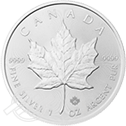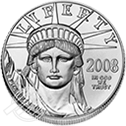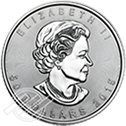Silver Bars vs. Silver Coins
It’s always good to have options.
When it comes to investment-grade silver, you have two great options to compare: silver bars vs. coins.
Each has advantages. Each has drawbacks. Each has unique qualities.
We will walk you through those details and help you decide which is right for you.
In the end, the decision to own silver is easy. Deciding what silver you want to own may be a little harder.
The Importance of Investing in Precious Metals
Investors turn to precious metals to anchor their portfolios.
Most traditional investments are paper-based assets—think stocks, bonds, treasuries, and exchange-traded funds (ETFs).
Paper assets can be volatile. Investor sentiment, economic uncertainty, and geopolitical events can send prices spiraling.
Paper investment vehicles are intangible and exist over computer networks. They are prone to hacking and erasure at the push of a button.
Precious metals—including silver bars and coins—offer a balance.
Physical silver is real. You hold it in your hand. You feel it. You touch it. You can take it with you wherever you go.
The silver in your investment-grade products has always existed. Silver won’t disappear and will alway be worth something. Physical silver acts as a store of value.
Inflation raises prices and diminishes the spending power of the dollar. Silver prices tend to also rise during inflationary times, thus preserving your investment funds.
Modern technology relies on silver. It is essential in manufacturing everything from solar panels to cell phones.
What Are Silver Bars?
Assayers, refiners, and non-governmental mints manufacture silver bars.
Each producer marks every silver bar with its place of origin, the weight of the bar, and a serial number.
The finest bars are 99.9% pure. Fractional bars—as low as 1/10th of an ounce—are available, and bars can weigh up to 1,000 ounces.
Higher production costs mean that small silver bars cost more per ounce than large bars. But fractional denominations make silver bars accessible on almost any budget.
When comparing silver bars vs. silver coins, bars are the more affordable way to own silver.
Even fractional bars cost less per ounce than their coinage counterparts.
You must have proper storage for silver bars. Silver takes up more space per ounce than other precious metals.
High-ounce bars are stackable and make for easy arranging. But they are heavy and may be difficult to move.
Take caution when storing and transporting silver.
Bars can chip. Constant rubbing will erode the weight of the silver bar, making it worth less.
Pros and Cons of Silver Bars
Now that we know the traits of silver bars, let’s look at the potential pros and cons of owning them.
The advantages of owning silver bars include:
- Bars are attainable on most budgets.
- They are easy to store and transport.
- Fractional divisibility makes them easy to liquidate in any amount.
The disadvantages of owning silver bars may be:
- High-ounce bars are heavy and may be difficult to carry and transport.
- Fractional bars cost more per ounce than larger denominations.
- Bars may need assaying—in other words, to be tested for purity and value—before liquidation.
What Are Silver Coins?
Governments mint silver coins. Coveted by investors and collectors, the coins are worth far more than their face value.
Ancient Egypt valued silver even more than gold. Egyptians fashioned silver into coinage. They also used it for jewelry and adornment.
Modern governments still mint beautiful silver coins. Designed to store value as an investment or collectible, the coins must have a face value.
Coins come in as little as 1/10th an ounce and can be as much as several ounces.
Minted silver coins come in tubes. A hard plastic container—called a monster box—holds the tubes for easy storage.
Coins carry a higher price per ounce than bars, because they cost more to manufacture.
But silver coins from government mints have worldwide recognition. They do not need assaying and can liquidate—for their silver value—in most regions.
The price premium balances out with a higher resale value than silver bars.
Pros and Cons of Silver Coins
Silver coins offer the following advantages:
- Their worldwide recognition makes coins easy to liquidate.
- Coins can be authenticated without assaying.
- Government-minted coins have a higher resale value than bars.
Some disadvantages of silver coins are:
- Coins need more storage space than bars.Their acquisition cost is higher than that of bars.
- Transporting coins is more cumbersome.
Key Differences Between Silver Bars vs. Silver Coins
Deciding between silver bars vs. coins can come down to personal preference. Each acts as a store of value that stands the test of time.
Let’s recap some of the key differences of silver bars vs. silver coins.
How They’re Produced
Private companies produce silver bars. These include assayers, refiners, and private mints.
Government mints press silver coins.
Minting
Silver coins mint according to exacting procedures.
Artists, engravers, and craftsmen pore over every detail of a new coin. Their painstaking work ensures a beautiful rendering made to meet the highest standards.
Production costs for coins are high.
Bars represent a simple form of investment-grade silver. They give you precious metal in its plainest of forms.
Nothing more. Nothing less.
Denomination
Silver bars weigh from 1/10th an ounce all the way up to 1,000 ounces.
Silver coins mint in 1/10th an ounce and may run up to 5 ounces. Coins have a denominated currency value, but it is far less than the value of the silver.
Considerations Before Investing
Investing in silver is not a get-rich-quick scheme.
Precious metals tend to appreciate over time. They offer asset protection and store the value of your dollars.
Deciding on silver bars vs. coins or silver coins vs. bars is a personal preference. Both preserve their value, diversifying and foundationally supporting your portfolio.
Silver is hot today. That doesn’t mean it will be hot a decade from now.
Pay attention to market and technological trends. Keep a watchful eye.
Use common sense and professional advice to decide your entry and exit point.
In the long run, silver will do you well. It has paid off for investors for centuries.
Investing in Silver Bars vs. Gold Coins: What Is Right for Me?
Silver is right for you.
If you are a cash buyer, your individual circumstances determine your need for bars or coins.
The direct-delivery process is simple.
You decide what you want to own. You remit payment, and your silver is directly-delivered—in about a week— to your door.
Investors with an individual retirement account can also have both bars and coins.
Any IRA can transfer into a precious metals IRA. The precious metals IRA is a self-directed individual retirement account designed to hold eligible silver coins and bars.
If you are 59 ½ and have a 401(k) or still own a 401(k) from a previous employer, you can roll it over into a Silver IRA. The transfer or rollover is tax-free and penalty-free.
In the precious metals IRA, you buy eligible precious metals with tax-deferred funds.
Eligible bars and coins are available in gold, silver, platinum, and palladium.
The team at Advantage Gold will help you with all your precious metals needs.
For almost a decade, we have been educating our clients. We will show you how easy it is to own a real, tangible asset.
Give us a call today, or click the link and tell us how to contact you.
We’re happy to help!
Tags: buying silver coins vs bars, silver bars vs silver coins


